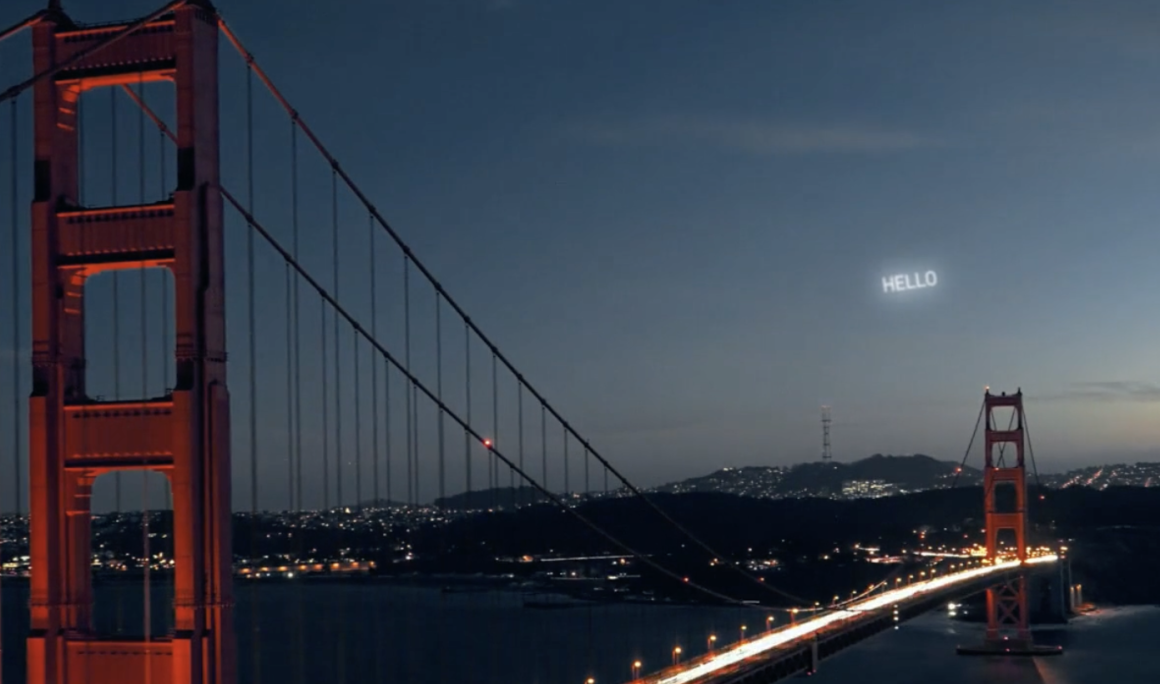Companies Pursue Space Advertising While Scientists Object
The idea of space advertising may seem like a logical step forward from planes dragging banners along beaches, sky writing, and lighted signs on the sides of blimps. Several companies are working on technologies to display huge messages across the sky and reaching more people than anything possible before. This, however, may be a rare example of a technological innovation that scientists and politicians almost universally reject.
Avant Space promises to reach one billion people
Several companies are developing ways to display messages from space that people can see with the naked eye. One of these is the Russian company Avant Space. Their plan is to launch constellations of small satellites, CubeSats, that will move in orbit and shine lasers to make logos or other images for advertisers.
Avant Space launched a single CubeSat in April 2024 to test their technology and reported that it was successful. The company website describes how it will provide customizable personal constellations to its customers. Company advertisements claim its images will be able to reach one billion people.

StartRocket to launch hundreds of CubeSats
Another Russian company, StartRocket, says it will deploy its own fleets of hundreds of CubeSats. They will reflect sunlight from Mylar sails to form logos and other images visible from the ground. Their plan is to launch the satellites to low-earth orbit to an altitude of about 310 miles. The company also plans to charge about $200,000 for every eight hours of advertising.
This hasn’t only been a Russian effort. In 2019, StartRocket announced it was working with PepsiCo on an “orbital advertising campaign” to market a new energy drink called “Adrenaline Rush.”
PepsiCo Russia spokesperson Olga Mangova said, “Orbital billboards are the revolution on the market of communications.”

Space advertising illegal in the United States
There may be a simple reason why Americans are not pursuing space advertising; it’s illegal in the United States. 51 U.S. Code 50911 – Space Advertising clearly states, “No holder of a license under this chapter may launch a payload containing any material to be used for purposes of obtrusive space advertising.”
The law went into effect in 2000. It includes a note stating that the U.S. president should negotiate with foreign countries to create agreements to support the U.S. law.
The definition of “obtrusive space advertising” is “advertising in outer space that is capable of being recognized by a human being on the surface of the Earth without the aid of a telescope or other technological device.”

This idea of obstruction leads to the reason why the scientific appears united against space advertising. In fact, many are pushing for a global ban on it. Their primary objection is that they believe constellations of satellites will interfere with groundbased astronomy.
In October 2024, the American Astronomical Society (AAS) issued a statement against space advertising. It includes the following lines concerning its position: “Increasing humanity’s scientific understanding of the universe depends on clear and unobstructed views of the cosmos,” and, “That enterprise is currently under threat from activities in space, including the proliferation of large satellite constellations,” and, “This kind of use of outer space represents a presently unknown, but potentially serious, threat to the pursuit of astronomical discovery using ground-based facilities.”
The AAS is also asking the U.S. delegation to the United Nation’s Committee on the Peaceful Uses of Outer Space (COPUOS) to support its position.
Others have begun to question using small satellites for advertising, making it an international issue.
“It might be a good starting point to re-examine the whole nature of regulation of space activity,” said Christopher Newman, a professor of space law at Northumbria University in Britain.

PepsiCo drops plans to advertise new product in space
It is not clear if it was due to the law, but in 2019 PepsiCo’s headquarters in the United States announced they were not continuing to work with StartRocket.
They released this message, “We can confirm StartRocket performed an exploratory test for stratosphere advertisements using the Adrenaline GameChangers logo. This was a one-time event; we have no further plans to test or commercially use this technology at this time.”
It will be interesting to see if other companies and countries continue developing space advertising technology.
“The lure of it is so great that I can’t imagine that no one will try,” said John Barentine of Dark Sky Consulting, and a member of AAS’s Committee for the Protection of Astronomy and the Space Environment. “I think the commercial value will prompt somebody to do it.”

Artist image of space advertising over a European city. | Image: Vlad Sitnikov, Vimeo.com
Total
0
Shares
Credit: avgeekery.com










